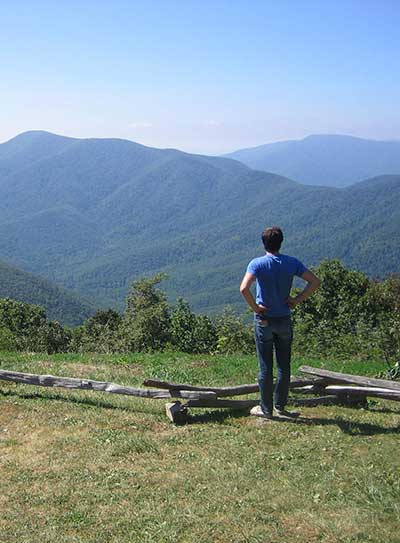
What We Do!
Landscape assessments, habitat modeling, planning and mapping services
The GIC brings diverse stakeholder groups together to develop green infrastructure plans that meet community needs. The GIC has extensive experience developing technical communication materials, workshops, training sessions, public meetings and collaborative decision-making processes. We use remote sensing technologies to map land cover to evaluate urban tree cover, large habitat patches, wildlife corridors, wetland changes and marsh migration from sea level rise.
Our staff have expertise in environmental planning, water resources management, GIS mapping and model building, urban and landscape forestry, parks and recreation design, historic landscape conservation and much more! Our highly specialized team approach can meet the needs of any client. We can:
 • Design green infrastructure models for counties, states or regions
• Design green infrastructure models for counties, states or regions
• Create an urban tree canopy assessment, tree inventory or master plan
• Perform code and ordinance reviews and writing
• Create urban redevelopment strategies or master plans
• Develop maps to inform comprehensive plans and strategies
• Lead training workshops including professional certification credits
• Provide strategic planning and facilitation for consensus building
• Green infrastructure plans, green print plans or resiliency plans for cities, towns or counties.
Read our Services Brochure here to learn how we can help you.
What is the Green Infrastructure Center?
The Green Infrastructure Center, Inc. (GIC) was formed in 2006 to help local governments, communities, and regional planning organizations, land trusts and developers evaluate their green infrastructure assets and make plans to conserve them. We provide the suite of tools – economic analysis, mapping, and land use planning and asset assessment – needed by communities to protect and restore their natural assets. The staff work as a team to help localities inventory their assets and create strategies for their conservation or restoration. We work at the regional and local scale in rural, suburban and urban environments across multiple states.
What is Green Infrastructure?
Green infrastructure is made up of the interconnected network of waterways, wetlands, woodlands, wildlife habitats, and other natural areas; greenways, parks, and other conservation lands; working farms, ranches and forests; and wilderness and other open spaces that support native species, maintain natural ecological processes, sustain air and water resources and contribute to health and quality of life (McDonald, Benedict, and O’Conner, 2005). Green infrastructure assets contribute to health and quality of life, such as forests that clean the air and filter and absorb stormwater. Just as we plan for “grey infrastructure” we also need to plan for and conserve our green infrastructure. To learn the history of this term see A Short History of the Term Green Infrastructure here (PDF).
 What is Green Infrastructure Planning?
What is Green Infrastructure Planning?
We call our natural resources “green infrastructure” because they provide vital community functions. Green infrastructure (GI) includes our forests, agricultural soils, parks and open spaces, rivers, wetlands and bays, and other habitats. They provide clean water, food, air quality, wildlife habitat and recreation and also support cultural resources by providing scenic views and settings that enhance our enjoyment of the landscape. But we need to know the extent of green infrastructure assets and how to conserve or restore them!
In short, green infrastructure planning involves:
1. Inventory green assets and connections,
2. Identify opportunities for their protection and/or restoration,
and
3. Develop a coordinated strategy to channel development and re-development to the most appropriate locations.
For more about projects implemented by the Green Infrastructure Center
go to our Resources page
or our themed pages:
• Connected Landscapes,
• Resilient Communities, and
• Healthy Green Cities.
To learn how to do this work check out our books and guides found there too!